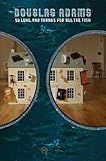There used to be a kind of stigma about wearing second-hand clothes – some people believed they were only for eccentric hippies and people who couldn't afford anything else. Fortunately, attitudes to recycling and reusing clothing have changed, and it has become fashionable as well as financially and ecologically beneficial to create your own unique look from previously owned garments. I have been shopping second-hand for as long as I can remember, accompanying my parents on trips to op shops, jumble sales and markets before I could walk! Over the years I've picked up some useful tips on how to sort the trash from the treasure, and I'd like to share them with you.
Shop for Specifics
It can be easy to get carried away in second-hand shops and buy anything that takes your fancy, but as with any clothes shopping trip, having specifics in mind is a good idea, especially if you need to keep tabs on your expenditure. Think about what you or your kids are lacking from your wardrobes, and what occasion or situation the clothing will be used for, to keep purchases practical. You might also like to consider which colours which will work with the clothing you already have, as this will help to make whatever you buy more versatile when combined with items in your existing wardrobe. If you are looking to complement a particular outfit, for example buying shoes to match a dress, then it could be worth taking the dress with you so that you can see them together before you spend your money.Keep Hunting
When you shop second-hand, you have to keep in mind that you may not find exactly what you want first time. A lot of patience might be required before you find the right dress in the right size, but the trick is to keep returning to have a browse around the op shops as often as possible – just remember, you aren't expected to buy something every time!Make Friends With The Staff
If you are a really dedicated op-shopper, you'll probably find it worthwhile to get to know the staff in your favourite shops. Most op shop staff will be happy to have a chat, and may let you know what days goods are restocked so you can get to new stuff as soon as possible. If you really get to be good friends, they might even look out for specific items in your size and let you have first refusal!Visit Op Shops In Upmarket Areas
To find the best quality garments and even designer labels at bargain basement prices, target op shops in upmarket areas. This is a good tip if you need to find clothes for situations where you need to make a good first impression such as an interview for a job, or if you have a party or wedding to attend. Brides-to-be might even get lucky and find the wedding dress of their dreams at a discount price.Measure Up
Whether you are shopping in department stores or op shops, knowing your size is always useful. Very few of us can accurately assess whether a garment will fit simply by looking at it, so get that measuring tape out and note down the appropriate measuments for yourself and anyone else you buy clothes for regularly. A fab tip is to cut out a piece of card, the size of a credit card so that it fits into your purse or wallet, and record the family's clothing measurements as a convenient reference that you'll always have to hand when you're shopping.Try Prospective Purchases On
Where possible, it is best not to rely completely on measurements - try clothing on before you buy, if you can. This is because sizing varies between manufacturers, and unlike a high street retail store, an op shop may carry hundreds of brands. Unless you have the skills to alter clothing, or know someone who can do so at a reasonable cost, don't buy clothes which are too small or too big – neither is flattering. When shopping for kids, be wary of buying things that they'll “grow into” as it is hard to estimate growth rates – that winter coat you buy one size too large might not fit properly until summer, when it's too hot to wear it!Check Thoroughly for Damage
Although some second-hand shops do ensure that the clothing they sell is in a reasonable condition, others don't, so before you buy, check over each garment thoroughly. Look out for stains, missing buttons, damaged zips, loose hems, scorch marks and cigarette burns. Assess each article of clothing to decide whether it would be worth fixing the problem – replacing a button on a dress for example is quite straightforward, whereas a visible burn mark on a top is probably not worth the time or trouble.Know What Suits You
When you go shopping in second hand shops, keep in mind the shape, cut and colour of clothing that typically suit your physique and style. The same goes for when you shop for your children or partner – don't buy them too many things they wouldn't normally wear, because those unfamiliar styles often get put in the back of the wardrobe and forgotten about.Unexpected Bargains
While it is a good idea to have a mental shopping list, keep an eye out for unexpected bargains which will almost certainly pop up from time to time. If your budget can stretch to accommodate the purchase, and you truly think you'll regret it if you don't buy it – go for it!By following my tips for second-hand shopping, hopefully, you'll find some wonderful clothing for your family and save money too.
Citations:
This article is by Beck, a frugal mother and blogger whose top tip right now is to compare private health insurance for extra peace of mind - you may be able to afford more cover than you think!

























































No comments:
Post a Comment
Please leave us some love...and have yourself a groovy day~!! Peaces...xoxo